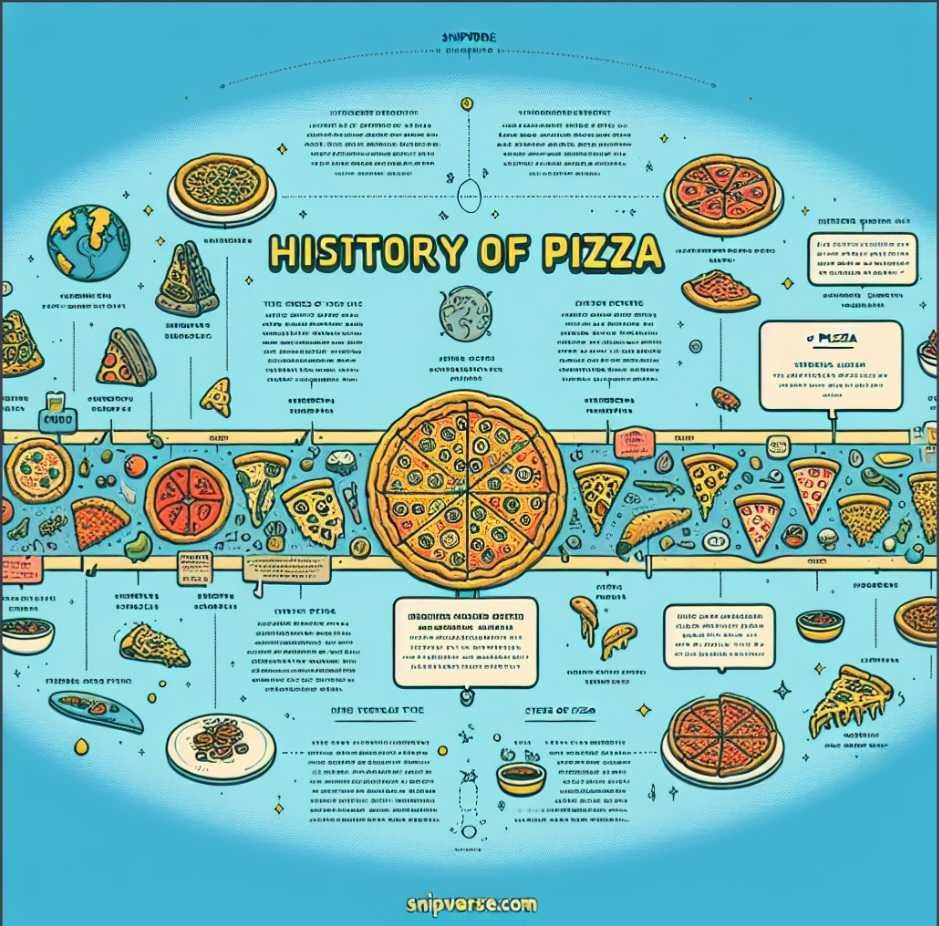History of Pizza 🍕
The history of pizza is rich and varied, spanning several centuries and multiple cultures. Here's a breakdown of its fascinating journey from ancient origins to its current status as a global culinary phenomenon:
### Ancient Beginnings
- Ancient Greece and Egypt: Flatbreads with various toppings were commonly consumed. The Greeks made a flatbread called plakous, topped with herbs, onion, cheese, and garlic. Egyptians also had flatbreads, often baked in mud ovens.
- Ancient Rome: The Romans adapted this idea and created a food called "panis focacius," which is a flatbread that evolved into the contemporary focaccia. Toppings like olive oil and local spices were used.
### Medieval Variations
- Italy: By the Middle Ages, various forms of flatbreads with toppings were popular in Italy. These were known regionally and varied greatly across the country in terms of ingredients and methods of preparation.
### Birth of Modern Pizza
- 18th Century Naples: The modern pizza as we know it began to take shape in Naples. As the city grew, the need for practical, affordable food increased. Pizza—cheap and easy to make—became a staple for the working class. These early pizzas were simple and often sold by street vendors.
- Tomato Introduction: The key turning point came when tomatoes, brought from the Americas to Europe in the 16th century, were accepted by Europeans. Neapolitans started adding tomatoes to their yeast-based flatbread, creating the earliest versions of the pizza we recognize today.
### 19th Century Naples
- Queen Margherita: In 1889, Queen Margherita of Savoy visited Naples. She was served three pizzas by pizzaiolo Raffaele Esposito, one of which was topped with tomatoes, mozzarella, and basil to represent the colors of the Italian flag. This pizza became her favorite and was named "Pizza Margherita" in her honor.
### Global Expansion
- Early 20th Century: Italian immigrants brought their pizza recipes to the United States. The first pizzeria in the U.S., Lombardi's, was opened in New York City in 1905. Initially, pizza was primarily consumed within Italian communities.
- Post WWII Spread: After World War II, soldiers returning from Italy brought with them a taste for pizza. This led to a post-war boom in pizzerias across the United States and eventually worldwide.
### Modern Pizza
- Globalization: Today, pizza is one of the world's most popular foods. Each country has interpreted and adapted pizza to fit local tastes and ingredients, leading to a multitude of unique variations.
- Fast Food: Chain restaurants like Domino's, Pizza Hut, and Papa John's have commercialized and popularized pizza on a massive scale, enabling its spread into virtually every corner of the globe.
- Artisanal Revival: In recent years, there's been a resurgence of interest in traditional and artisanal pizza-making techniques, with local ingredients, wood-fired ovens, and a focus on culinary heritage.
### Types and Variations
- Neapolitan Pizza: Known for its thin crust and minimal toppings, often cooked in a wood-fired oven.
- Chicago Deep-Dish: A thick-crust pizza known for its deep, pie-like structure filled with cheese, sauce, and various toppings.
- New York-Style Pizza: Characterized by its large, foldable slices and crispy yet chewy crust.
- Sicilian Pizza: Thick, rectangular slices with a focus on robust tomato sauce and chunky toppings.
- California-Style: Known for its innovative and gourmet toppings, such as barbecue chicken or smoked salmon.
Pizza's journey from ancient flatbreads to today's globally beloved dish showcases its adaptability and universal appeal.






